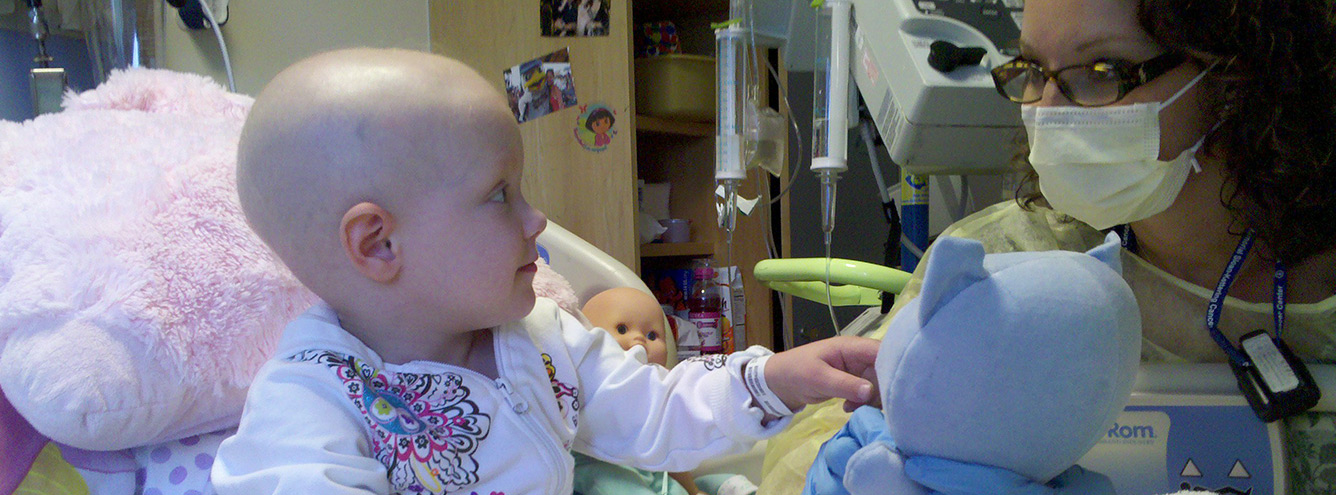The most important question for retinoblastoma clinical research is:
“Is this treatment more or less effective than current therapies, with more or fewer side effects?”
The number of children diagnosed with retinoblastoma is small, and children are widely distributed around the world.
Only 10% of affected children live in developed countries, where most clinical research takes place and the main focus is saving sight.
90% of affected children live in developing countries, where clinical research is difficult due to limited resource. Most of these children have advanced cancer and the priority is life-saving treatment and palliative care.
This makes it difficult to conduct rigorous clinical trials that effectively answer the question.
Currently, retinoblastoma research benefits about 6% of children in the world with eye cancer. Collaborative global retinoblastoma clinical trials will improve care for many more children.
Variations in “Standard” Treatment
The combination of carboplatin, etoposide and vincristine is globally recognized chemotherapy for retinoblastoma. However, there is no internationally agreed-to regimen for their use. This situation is also observed in the use of intra-arterial chemotherapy. Factors that differ between centres around the world include:
- Dosage (including the way it is calculated)
- Timing and delivery method of medications
- Length of rest period (time between each cycle)
- Number of cycles
- Supportive medications (drug, dose, timing, given to prevent side effects or treat side effects only after they appear)
- EUA and focal therapy schedule
- Additional therapies (chemotherapy injections, radiation etc)
Accurate comparison of outcome from each of those regimens is not currently possible.
There is also no universal agreement on pathological findings that indicate need for post-enucleation therapy.
As a result, there is no standard treatment for retinoblastoma confined to the eye, or for high risk post-operative care.
Single Centre Research
Numerous single centre studies are investigating promising therapies. However, many children receiving a treatment under investigation have already received different treatments at that centre or elsewhere.
These differing treatment histories make it difficult to evaluate toxicity and extract meaningful conclusions about the treatment’s efficiency. The numbers of children enrolled are also very small, due to the rarity and global distribution of this cancer.
These studies cannot validate therapies, but they do provide important information about potential risks. They also put forward new ideas that could be studied effectively with collaborative multicentre research.
Lack of Randomization
The small numbers of children enrolled in individual research studies prevents randomization. Retinoblastoma is particularly difficult for randomization, since there are very many factors to be considered: numbers of tumours, one or both eyes affected, genetics, prior therapies, and social and economic factors.
Without standard therapy comparison, investigators cannot demonstrate how valuable an experimental therapy is. They cannot evaluate risk, or predict efficiency in treating a particular stage of disease.
Review of Retinoblastoma Research
In 2005, Health Technology Assessment (a division of the UK National Health Service) published a “Systematic review of effectiveness of different treatments for childhood retinoblastoma”.
The authors thoroughly assessed published data from retinoblastoma research worldwide. They found “the evidence base is not sufficiently robust to provide clear guidance for clinical practice.”
They concluded that research was required on all treatments, and a decade later, their recommendations are yet to be effectively addressed. They recommended that:
- study design be improved to achieve high-quality prospective research;
- standardized outcome measures be agreed by the retinoblastoma research community to enable meaningful, impartial data analysis;
- randomized controlled multicentre clinical trials become the target for researchers, to vigorously test efficiency of different treatments.
Read the summary and download the full report.
Registered Clinical Trials
Most peer-reviewed journals will only publish the results of a clinical trial if it is registered in the Clinical Trials Database of the US National Institutes of Health (NIH).
Professionals, parents and adult survivors should carefully review and assess registered trials for relevance and value to children with retinoblastoma, survivors, and their family
The Way Forward
International multicentre clinical trials are the only effective way to test existing and new retinoblastoma treatments. World Eye Cancer Hope encourages a collaborative global research community that challenges the rarity of this cancer.
Awareness campaigns, medical and supportive care based on clear scientific evidence will dramatically improve children’s chances of survival with minimal negative effects, and lifelong survivor care and quality of life.
One Retinoblastoma World is an exciting venture with much opportunity to overcome many research obstacles. The conference unites researchers, medical professionals, parents, survivors, and children to address key issues in patient care, discuss research progress, and nurture collaborations that advance high quality evidence based care.


